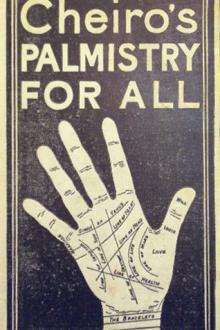The Diary - Samuel Pepys (red white and royal blue hardcover txt) 📗

- Author: Samuel Pepys
Book online «The Diary - Samuel Pepys (red white and royal blue hardcover txt) 📗». Author Samuel Pepys
There were sixty fellows present at this meeting of the Royal Society when the new Council was elected. The annual meeting is still held on St. Andrew’s day. ↩
The cross of St. Andrew, like that of St. Patrick, is a saltire. The two, combined with the red cross of St. George, form the Union flag. ↩
J. Clerke, writing to the Navy Commissioners, November 21st, 1668, “desires that a valuation may be made of the goods taken by Mr. Acworth out of the stores, with names of the parties who will attest it, and that all the witnesses may be ready by Wednesday sevennight” (Calendar of State Papers, 1668–69, p. 71). This may be Clerke, the solicitor, referred to above. ↩
See note 2454. ↩
William Holder’s Elements of Speech: An Essay of Inquiry Into the Natural Production of Letters was published at London in 1669. ↩
Colonel Middleton. ↩
This tragedy, taken from the first book of Maccabees, was performed with great success. It was first published in 1669, and a MS. copy is preserved in the Bodleian Library (MS. Rawl. Poet. 39). ↩
Better known as Bloomsbury Market; but since swallowed up in the New Oxford Street improvements. ↩
This seems to refer to the first form of the Hon. Robert Boyle’s hydrometer, which he described in a paper in the Philosophical Transactions for June, 1675, under the title of a “New Essay instrument.” In this paper the author refers to a glass instrument exhibited many years before by himself, “consisting of a bubble furnished with a long and slender stem, which was to be put into several liquors to compare and estimate their specific gravity.” Boyle describes this glass bubble in a paper in Philosophical Transactions, vol. iv, No. 50, p. 1001, 1669, entitled, The Weights of Water in Water with Ordinary Balances and Weights. ↩
Colonel Norwood, the Deputy Governor. ↩
Anthony Fist. ↩
Ben Jonson’s tragedy, first published in 1611. Catiline was taken by Hart, Cethegus by Mohun, Cicero by Burt, and Sempronia by Mrs. Corey. ↩
See January 23rd, 1666–67; March 30th, 1667. She is noticed in one of Rochester’s satires:
“And Mrs. Strafford yield to B⸺ Hall.”
State Poems, p. 35, 8vo., 1697↩
Luis de Benavides Carillo y Toledo, Marques de Caracena, one of the most eminent of the Spanish generals. He had been commander of the Spanish cavalry in Flanders; and he was afterwards Governor of Milan, and employed in the wars of Italy. He died in 1668. —B. ↩
Henri, Vicomte de Turenne, the celebrated general. In 1666, after the death of his wife, Charlotte, heiress of the Duc de la Force, who like himself had been a Huguenot, and whose influence had retained him in that communion, Turenne professed himself a Roman Catholic. —B. ↩
Jean Baptiste Colbert, the great minister. —B. ↩
This reminds us of the famous reply, Laissez nous faire, made to Colbert by the French merchants, whose interests he thought to promote by laws and regulations. —B. ↩
Strike topsails. ↩
This was probably the woman described in Wonderful Characters as Barbara Urslerin, the hairy-faced woman. She was born at Augsburg in 1629, which gives us exactly the age Pepys mentions. It is recorded that she was exhibited in 1668 in Ratcliffe Highway. There are two portraits of her—one by Isaac Brunn, taken in 1653, and another by Gaywood, about 1658. ↩
As his partner in the contract for victualling the navy. ↩
The Life of Julius Caesar, with an Account of His Medals by Clement Edmonds, fol., London, 1655. ↩
Musicæ Compendium. By Réné Des Cartes, Amsterdam, 1617; rendered into English, London, 1653, 4to. The translator, whose name did not appear on the title, was William, Viscount Brouncker, Pepys’s colleague, who proved his knowledge of music by the performance. ↩
A tragicomedy by Fletcher, first published in 1647 at the time, though, when revived at Drury Lane in 1743, it met with little success. ↩
The celebrated John de Witt, Grand Pensionary of Holland, who, a few years afterwards, was massacred, with his brother Cornelius, by the Dutch mob, enraged at their opposition to the elevation of William of Orange to the Stadtholdership, when the States were overrun by the French army, and the Dutch fleets beaten at sea by the English. The murder of the De Witts forms one of the main incidents of Alexandre Dumas’s Black Tulip. ↩
Henry Sheres accompanied Lord Sandwich in his embassy to Spain, and returned to England in September, 1667, bearing letters from the ambassador (see September 8th, 22nd, 27th). He was an officer in the Ordnance, and served under Lord Dartmouth at the demolition of the Mole at Tangier in 1683. He was knighted about 1684. He translated Polybius (2 vols. 8vo., 1693), and also some of the Dialogues of Lucian, included in the translation published in 1711 (3 vols. 8vo.). Pepys bequeathed him a ring, and he died about 1713. In June of that year the sale of the library of Sir Henry Sheers, deceased, was advertised (Guardian, No. 82). ↩
See February 21st, 1667–68. ↩
It would seem that the wooden saltcellar was burnt, together with the tablecloth. —B. ↩
This sentence is imperfect. ↩
Evelyn saw her, January 29th, 1668–69. She was born in the Low Countries, and stood, at





Comments (0)